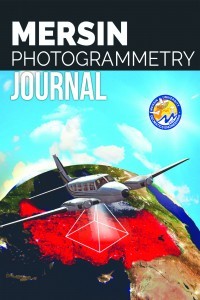Using photogrammetric modeling in reverse engineering applications: Damaged turbocharger example
Using photogrammetric modeling in reverse engineering applications: Damaged turbocharger example
Engineering in different areas such as design, manufacture, quality control, research and development, damage analysis, etc. increasingly needs fast, detailed and accurate three-dimensional (3D) documentation of mechanical parts. Moreover, not only in the production and design processes, but also in the post-production stages, the details of the parts may need to be documented in the exact dimensions. Identifying an assembly's components and their interrelationships, producing new digital 2D-3D models of the assembly or parts, rebuilding a part or assembly, examining parts to ensure quality and tolerances, improving performance and if there are any, determining the damaged sections are some of the essential applications of reverse engineering. The purpose of this article is to demonstrate the implementation of a low cost scanning system to create digital copies of mechanical parts. In this study, a mobile phone-based photogrammetric technique is applied to obtain a 3D model of the damaged turbocharger of a car. Firstly, the turbocharger was dismantled into two parts. Both parts were individually modeled and then assembled together. Thus, the turbo wings under the covers were modeled in detail. Accuracy analysis in terms of dimensions was performed in the obtained model. Finally, a simple CFD application was made on a section of the compressor wheel of the turbocharger. Accuracy analyzes of the 3D models showed that less than 0.5 mm accuracy can be obtained without difficulty.
___
- Anwer N & Mathieu L (2016). From reverse engineering to shape engineering in mechanical design. CIRP Annals - Manufacturing Technology, 65(1), 165–168. https://doi.org/10.1016/j.cirp.2016.04.052
- Bouaifi M (2018, February 6). Re: Why do we need Finer Mesh near the Wall? Mathematical Reason? [Discussion post]. Researchgate. https://www.researchgate.net/post/Why-do-we-need-Finer-Mesh-near-the-Wall-Mathematical-Reason
- Buonamici F, Carfagni M, Furferi R, Governi L, Lapini A & Volpe Y (2018). Reverse engineering of mechanical parts: A template-based approach. Journal of Computational Design and Engineering, 5(2), 145–159. https://doi.org/10.1016/j.jcde.2017.11.009
- Deja M, Dobrzyński M & Rymkiewicz M (2019). Application of Reverse Engineering Technology in Part Design for Shipbuilding Industry. Polish Maritime Research, 26(2), 126–133. https://doi.org/10.2478/pomr-2019-0032
- Doğan Y & Yakar M (2018). Gis and Three-Dimensional Modeling for Cultural Heritages. International Journal of Engineering and Geosciences, 50–55. https://doi.org/10.26833/ijeg.378257
- Dúbravčík M & Kender Š (2012). Application of reverse engineering techniques in mechanics system services. Procedia Engineering, 48, 96–104. https://doi.org/10.1016/j.proeng.2012.09.491
- K A Ingle, Reverse Engineering. New York: McGraw-Hill, 1994.
- Kumar A, Jain P K & Pathak P M (2013). Reverse engineering in product manufacturing: an overview. Daaam International Scientific Book, 2013. p. 665-678.
- Thompson W B, Owen J C, De St. Germain H J, Stark S R & Henderson T C (1999). Feature-based reverse engineering of mechanical parts. IEEE Transactions on Robotics and Automation, 15(1), 57–66. https://doi.org/10.1109/70.744602
- Ulvi A, Yakar M, Yiğit A & Kaya Y (2019). The Use of Photogrammetric Techniques in Documenting Cultural Heritage: The Example of Aksaray Selime Sultan Tomb. Universal Journal Of Engineering Science, 7(3), 64-73.
- Unal M, Yakar M, Yildiz F (2004). Discontinuity surface roughness measurement techniques and the evaluation of digital photogrammetric method. In: Proceedings of the 20th international congress for photogrammetry and remote sensing, ISPRS, 1103–1108
- Verim Ö & Yumurtacı M (2020). Application of reverse engineering approach on a damaged mechanical part. International Advanced Researches and Engineering Journal, 4(1), 21–28. https://doi.org/10.35860/iarej.687014
- Yakar M & Yılmaz H M (2008). Kültürel Miraslardan Tarihi Horozluhan’ın Fotogrametrik Rölöve Çalışması ve 3 Boyutlu Modellenmesi. Selçuk Üniversitesi Mühendislik, Bilim ve Teknoloji Dergisi, 23(2), 25-33.
- Yılmaz H M, Karabork H, Yakar M (2000). Yersel Fotogrametrinin Kullanım Alanları, Nigde Universitesi Muhendislik Bilimleri Dergisi, 4(1), 18-28.
- Yilmaz H M, Yakar M & Yildiz F (2008). Digital photogrammetry in obtaining of 3D model data of irregular small objects. The International Archives of the Photogrammetry, Remote Sensing and Spatial Information Sciences, 37, 125-130.
- Yayın Aralığı: Yılda 2 Sayı
- Başlangıç: 2019
- Yayıncı: Mersin Üniversitesi
Sayıdaki Diğer Makaleler
Using photogrammetric modeling in reverse engineering applications: Damaged turbocharger example
Tuğba SARICAOĞLU, Nezihat KÖŞKLÜK KAYA
Digital documentation of ancient stone carving in Şuayip City
Halil İbrahim ŞENOL, Nizar POLAT, Yunus KAYA, Abdulkadir MEMDUHOĞLU, Mustafa ULUKAVAK
Documenting historic tileworks using smartphone-based photogrammetry
Photogrammetric analysis of multispectral and thermal close-range images
